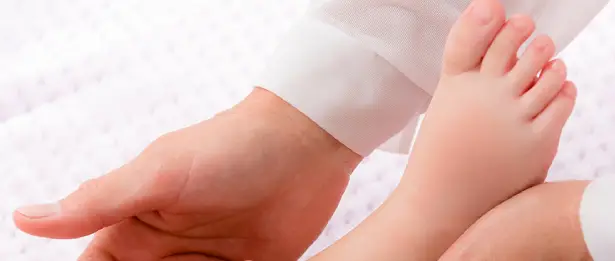Foot Development in Children
Children's foot development generally varies depending on the child's age and developmental stages, starting from birth.

Children's foot development generally varies depending on the child's age and developmental stages, starting from birth. It includes topics such as foot development, the child's learning to walk, shoe selection, and foot health.
Children's Foot Development Treatment at Liv Hospital
Consisting of 26 bones and 35 joints, the foot is a complex anatomical structure supported by the ligaments between the bones. In infancy, there is a thick layer of fat on the sole of the foot and the foot is quite flexible.
Flat feet: One of the most common foot problems in childhood is flat feet. Although the soles of the feet of children up to 2 years old appear flat compared to adults, flat feet are soft. As the child grows, the ligaments and muscles around the foot become stronger and harder, and the fatty tissue under the sole becomes thinner. Around the age of 6, the arch on the inner side of the sole of the foot begins to become evident. If flat feet that cause pain and calluses on the feet are noticed, further examination and treatment is required.
Intoeing: Another common orthopedic problem in childhood is intoeing. Intoeing can occur in the hip, thigh, leg, and foot itself. If incontinence is serious, does not improve with age, affects one side, or causes clumsiness and frequent falls in school-age children, a specialist should be consulted for further examination and treatment.
Extroversion: Extroversion may rarely be seen in childhood. This condition, which usually improves as the child grows, should be evaluated by a specialist if it is unilateral and accompanied by pain. In addition, further examination and treatment is required in the presence of deformities of the toes in childhood, ingrown toenails, painful bone protrusions in the foot, stiffness in the foot, and pain caused by walking limply.
Most children who start walking between the 9th and 18th months may experience flat feet and inward pressing of the feet, as the muscles and ligaments do not have sufficient strength and stiffness. Especially around the age of 6, if there are flat feet that cause pain and calluses on the feet, clumsiness that does not improve as the child grows, and introversion that causes frequent falls, further examination and treatment is required.
Children's Foot Development Procedures at Liv Hospital
Flat feet and instep can be corrected with surgery. The important thing here is timing and deciding which children need surgery. In general, the principle is not to touch those who have no complaints. What is meant by complaint is not just pain. Deformation in shoes, difficulty in running, or atypical complaints about the child's legs should also be taken into consideration. If there is no other underlying cause and we believe that the child's flat feet and instep will progress further, surgery can be performed starting from the age of 7-8.